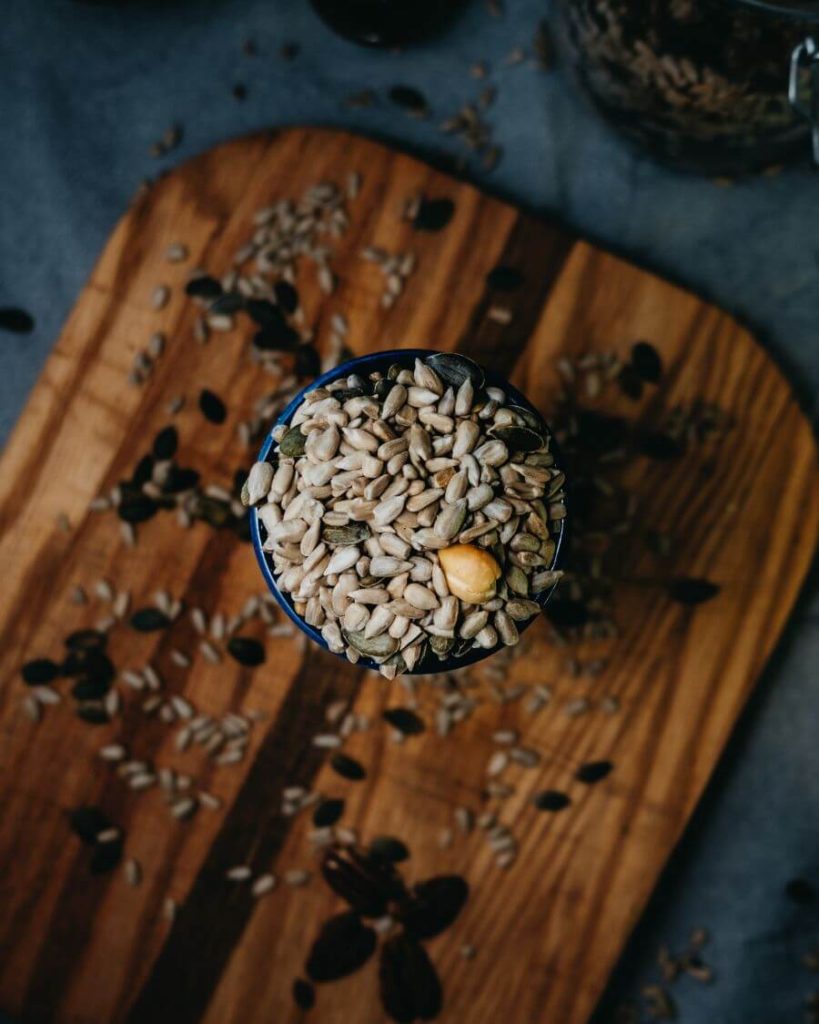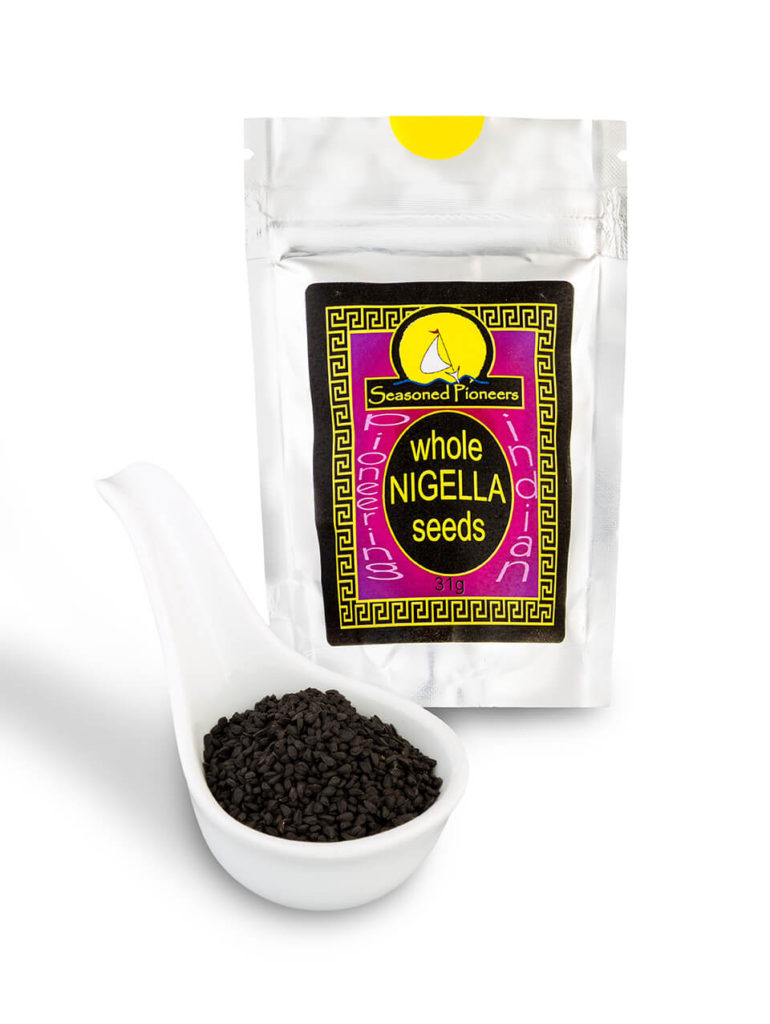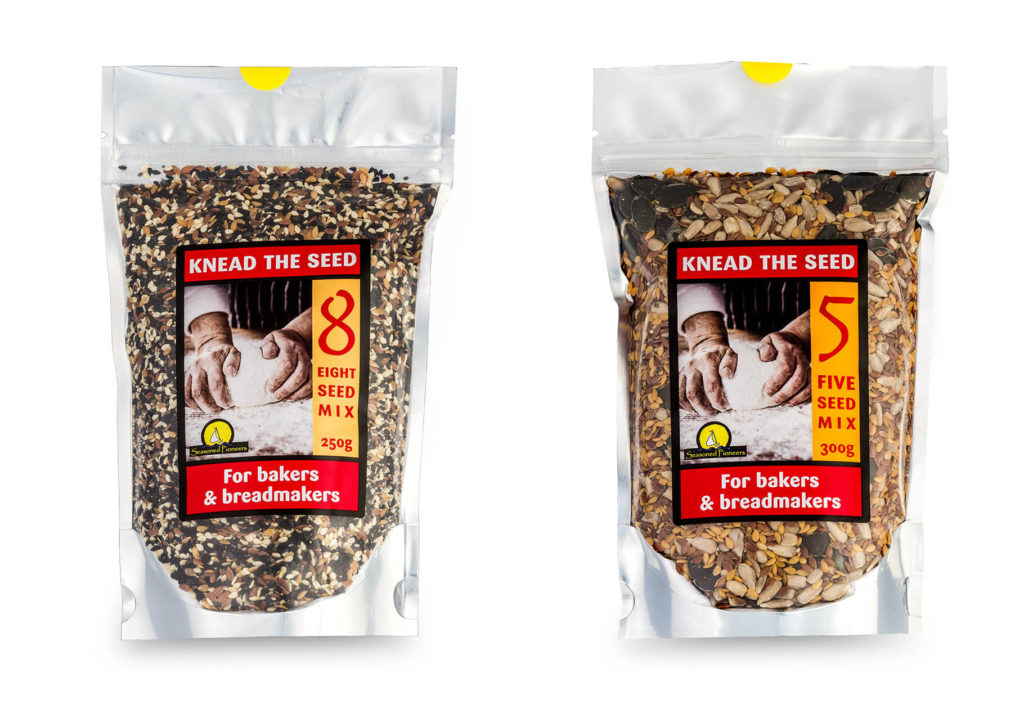Use your ‘loaf’ and make the best seeded bread ever!
Understanding Spices
Your cart is empty.
SUBTOTAL
£0.00

Understanding Spices
Is there anyone who doesn’t go weak at the knees when confronted by the sensational aroma of freshly baked home-made bread?
For almost sixty years we have been subjected to mass produced bread, lacking in substance and often tasteless into the bargain. As a nation of bread lovers we have grown to tolerate a product which is a poor representation of the ‘real ‘ thing. It is an unrecognisable substitute ‘enhanced’ with additives and preservatives that have unpronounceable names and unimpressive credentials.
Although a very important diet staple, our daily loaf has mostly become a fast processed, over-inflated, ‘claggy’ textured commodity with an unnatural extended shelf life. Commercially it has many charms. It is easy and quick to make, long lasting and cheap. Even more encouraging – we are prepared to buy it!
As we become ever more interested in what we put into our bodies, could this be the time to consider the greater satisfaction of making bread in the time-honoured, traditional way? The benefits, both in terms of healthy eating and the sheer pleasure of producing tantalising food, are enormous.
When life has become absurdly frenetic for so many, maybe we should take a step back, slow down and appreciate the joys of simple things? Being creative has its own rewards and add to that the bonus of taking out all those pent-up frustrations on a lump of dough and what’s not to like?!
Remember that well known phrase – “We are what we eat”. Seemingly endless references to bleachers, enhancers, E numbers, emulsifiers, preservatives, anti-oxidants, sweeteners, allergens, hard and hydrogenated fats, chlorine dioxide gas – all with negative connotations are to be found when researching the industrialised process of bread making. There has to be a better way…
Bread making is a simple but fascinating process. There are five basic ingredients – flour, yeast, salt, sugar or honey and water. For those not wishing to end up looking like Popeye the sailor or The Incredible Hulk a bread making machine is a great asset! Whilst not speeding up the process it can be time- delayed to produce hot bread for breakfast (or any other time) and is, of course, much less hands-on. Either way you know exactly what you are consuming!
Strong bread flour is a necessity and wholemeal or wholewheat would be a preferred choice. A 50/50 blend of white and brown gives a lighter texture and represents a good compromise. Experiment!
There are many interesting alternatives to the basic loaf. For example, by adding olives or mustard, ham and cheese – what could be more enticing for a summer picnic?
Hot cross buns made with dried fruit, cinnamon and mixed spice, panettone with dried fruit, cardamom and lemon zest, pepperoni bread using tomato puree, pepperoni, mozzarella cheese, dried basil or oregano – there can be so much variety in yeast-based ‘breads’. (Do follow tried and tested recipes.)
A very simple and healthy option to add flavour and crunch is those amazing superfoods – seeds. Ideally consumed on a regular basis, these tiny plant-based ‘parcels’ of concentrated nutrition – packed full of fibre, protein, vitamins, minerals, unsaturated fats and antioxidants – make wonderful snacks and are a sensational addition to many dishes. Bread immediately comes to mind.
Oil-rich sesame seeds with a nutty taste come in several different colours and are extremely rich in properties that protect against heart disease, arthritis, and diabetes. They help to maintain hormone balance, thyroid health, the immune system and general metabolism. Thought to be anti-inflammatory, good for healthy bones, an antioxidant, full of fibre, protein, magnesium, iron, copper and Vitamin B6 – they really are a ‘wonder’ food.
Linseed (or ‘flaxseed’ – the same plant used to produce linen) is a great source of soluble fibre, omega 3 fats and contains diverse nutrients. It can help prevent constipation, control blood pressure, reduce cholesterol and has a beneficial effect on cancer and diabetes.
Also capable of lowering blood pressure and blood sugar are chia seeds. These tiny, gluten free seeds are rich in omega 3 fats, protein, fibre, antioxidants (preventing the free radical damage associated with cancer) and calcium which strengthens bones and teeth. With iron, folate (B9 – necessary for making red and white blood cells and genetic material) and magnesium, chia seeds are yet another example of the amazing health – giving properties of seeds.
Pumpkin seeds are a very good source of magnesium, iron and zinc. Magnesium helps control blood pressure and sugar levels. It also helps maintain healthy hearts and bones. Pumpkin seeds are also full of fibre giving many health benefits for the digestion, the heart, those with diabetes and for the over-weight. They provide healthy fats and have been found useful in urinary disorders.

Full of fibre, protein and beneficial fats, sunflower seeds are also jam- packed with vitamins, minerals and phytosterols. This latter nutrient has been found to improve the immune system, help prevent cancers and lower cholesterol. Add to this, magnesium, copper and selenium and we have yet another magic bullet aiming straight for healthy well-being.

Nigella seeds are full of fibre, calcium, iron and magnesium. They have many claims to fame with properties that can reduce cholesterol, blood sugar and inflammation, that can protect the liver, prevent cancer and have a positive effect on bacterial infections and stomach ulcers. Another one for the ‘medicine cupboard’!
Harvested from the opium poppy, poppy seeds, along with most of the afore-mentioned seeds, have been used for thousands of years. Great for flavour and ‘crunch’ these seeds also come with impressive health benefits. They contain phosphorous, magnesium, zinc, iron, calcium, manganese, thiamin, folate, B complex vitamins and antioxidant compounds – all essential for good health. High in fibre, protein, polyunsaturated fat and potassium, they do not bring with them any harmful effects their origins might imply! In fact they are incorporated into many well known pharmaceutical preparations.
Each type of seed is unique and though often miniscule every seed is an amazing capsule of energy. They have much to offer as part of a healthy life-style. Mixed together in the bread making process the benefits of taste, ‘crunch’ and improved well being are instantly multiplied. What could be easier. Why not try our “Knead the Seed” range of seeds for bakers and bread makers. We have a large seed mix called “5 Seed Mix” and a smaller seed mix called “8 Seed Mix”. They also have many alternative uses too!

Understanding Spices
Spices have long been integral to the UK's culinary landscape, adding depth, flavours, and richness to a myriad of dishes. From the pungent aroma of cumin in Indian curries to...
Read MoreNews
We want to make sure we do everything we can to get your Christmas gifts & ingredients to you in time. Order by the dates below to guarantee that we...
Read MoreUnderstanding Spices
Confetti is an essential part of any wedding day. Not only is it a wonderful way to greet a newlywed couple, but it also provides some beautiful photo opportunities. The...
Read MoreSeasonal Ideas
It’s no secret that any handmade gift will always be more special than a store-bought one. Homemade food gifts are especially wonderful, a labour of love that shows someone you...
Read More